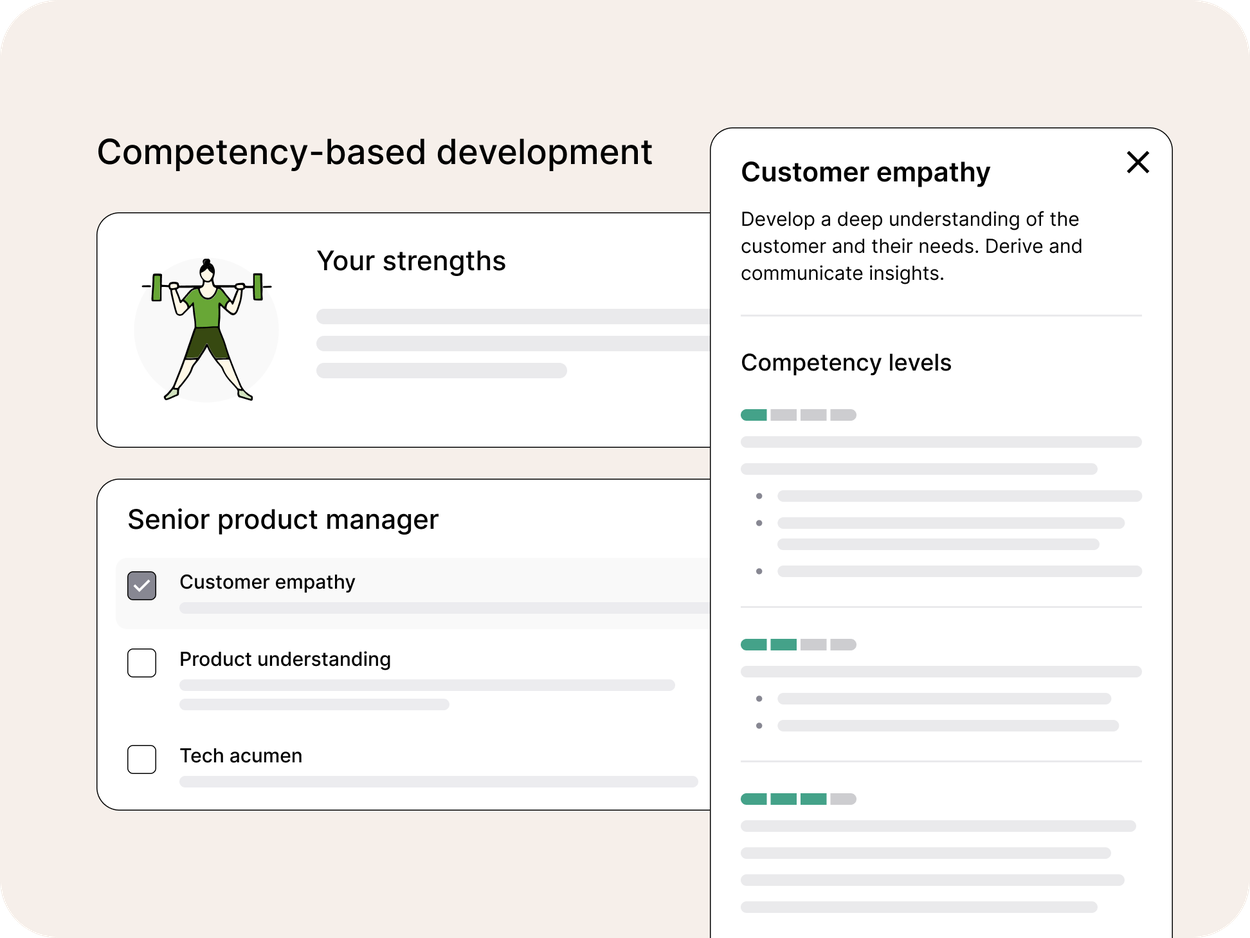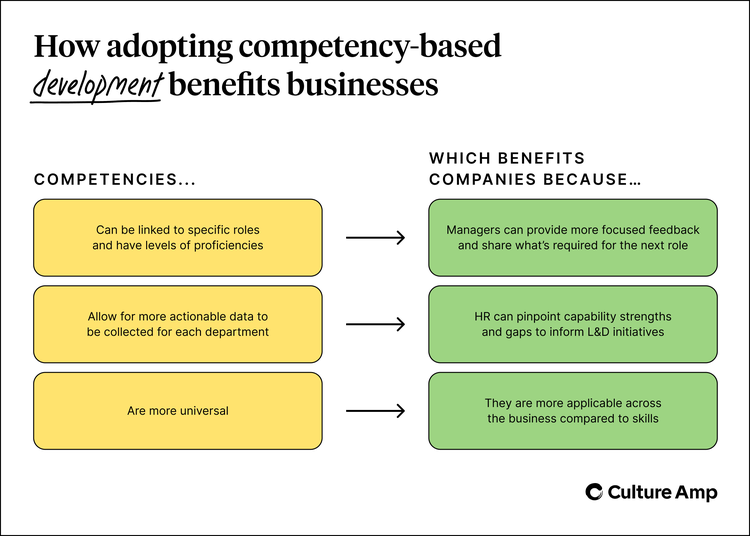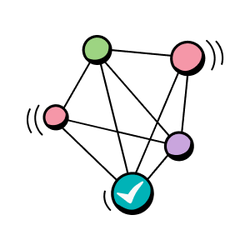
Introducing competency-based development plans

Written by

Senior Content Marketing Manager, Culture Amp
Learning and development (L&D) is the #2 most influential driver of engagement, and the #1 reason an employee decides to leave or join an organization, according to research from Culture Amp's people scientists.
Yet, a recent outside survey found that only 32% of surveyed employees feel “very satisfied” with their company’s L&D program. This doesn’t spell good news for organizations, as Culture Amp data has shown that employees who don’t have access to meaningful L&D opportunities are two times more likely to leave an organization within a year.
A solution: Offer high-value L&D opportunities via competency-based development plans that drive growth and performance at scale. The benefit is straightforward, with Culture Amp data showing that employees who have created development plans in Develop see a 30% average increase in performance ratings.
If driving a high-performance culture is a priority for you in 2024, then competency-based development plans are the answer. By integrating company- and role-specific competencies right into the development planning workflow, show employees a clear path to success, empower them to set actionable goals, and motivate them to grow at your company.
What is competency-based development?
Understanding competency-based development starts with understanding what competencies are – and why they matter.
In HR, competencies refer to the skills, knowledge, and behaviors employees need to fulfill their job responsibilities.
Examples of competencies include:
- Creativity
- Critical thinking and problem-solving
- Data-informed decision making
- Leadership
- Responsibility
- Teamwork
- Trustworthiness
On the surface, “competencies” and “skills” may sound like the same thing, but a skill is just one component of a competency.
| Skill | Competency | |
|---|---|---|
| Definition | An ability or proficiency that can be developed through learning, practice, and experience | Encompasses a combination of skills, knowledge, behaviors, and attributes required to perform tasks or roles effectively |
| Scope | Specific | Comprehensive – often comprised of multiple skills |
| Leveling | Are often not leveled | Are often leveled to help build skills across roles |
| Longevity | May not be relevant in the future (e.g., proficiency with a specific software) | Stays relevant even as the business/technology evolves |
| Examples | “Active listening,” “public speaking,” “written communication” | Communication: “Listens actively, shares information clearly and honestly, and communicates effectively through both oral and written communication” |
Think of it this way: A skill is a specific, tactical ability that someone can develop. A competency is broader and encompasses levels of proficiency across a range of skills. For example, “copywriting” is a skill, while “strategic communication” is a competency.
Competency-based development is an approach to employee development that focuses on the competencies employees need to succeed in a particular role and grow within a company.
Why are competency-based development plans beneficial?
Our people scientists have found that competency-based development plans:
- Motivate employees by helping them clearly understand what’s required for their next role, whether they hope to advance in their current role or switch teams.
- Empower managers to provide employees with precise feedback on their performance and progress.
- Allow each department to collect more actionable aggregate data, which helps HR pinpoint capability strengths and gaps that relate to business success.
- Improve performance across the organization by motivating employees to reach their full potential with career goals that align with business needs.
Focusing on competencies also provides businesses with flexibility as they evolve – something that is paramount in today’s ever-changing world of work. For instance, the competency of “communication” remains applicable even if a business changes its communication tools.

Embrace competency-based development plans with Culture Amp
We are excited to introduce competency-based development planning as part of Develop, the employee development tool designed to drive performance at scale by aligning individual development to business success.

With Develop, you can:
- Align employee development with business strategy. Define competencies for business success and integrate them into the development planning workflow, empowering managers and employees to understand the most important growth areas, proactively take action on feedback, and set motivating and aligned development goals.
- Improve development conversations between managers and employees. Support effective communication between managers and employees by establishing clear standards for success and providing quick access to relevant competency-based learning resources – right from the development planning workflow.
- Know exactly where to focus your L&D and talent processes. Utilize built-in analytics to access hyper-targeted insights into specific employee groups to identify capability strengths and gaps, informing your L&D programs and talent processes. You can also filter by demographics to surface disparities in L&D and across the wider employee experience.
By aligning employee career development with your business goals, you’ll not only improve performance across the organization, but keep employees motivated while you’re doing it. So what are you waiting for? Get started with Develop today.




